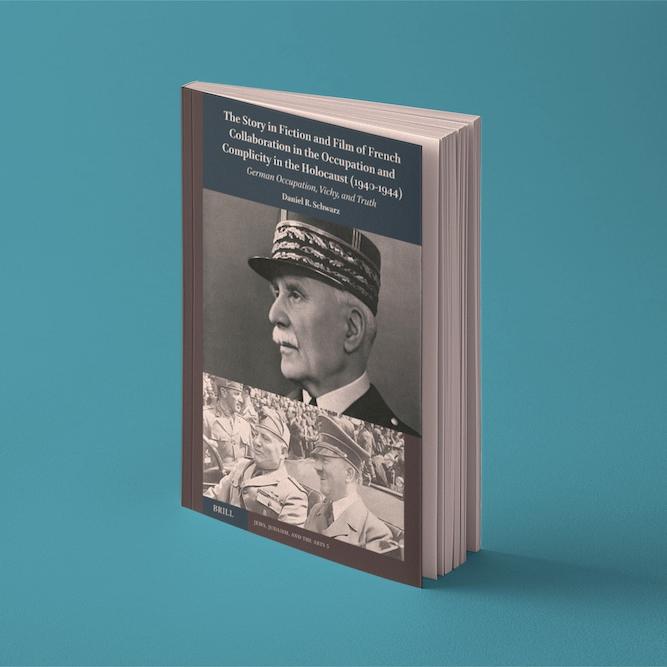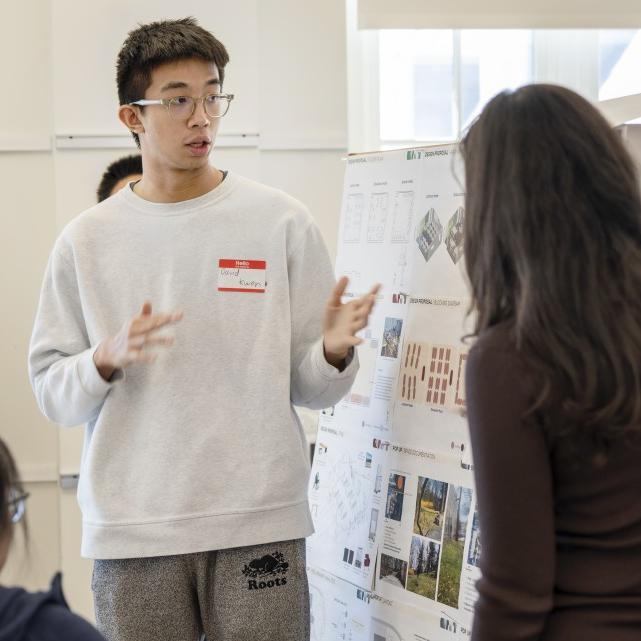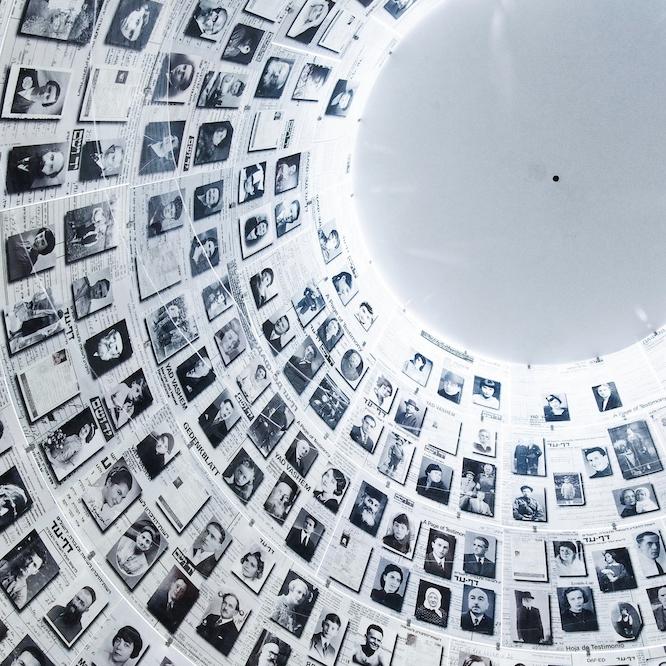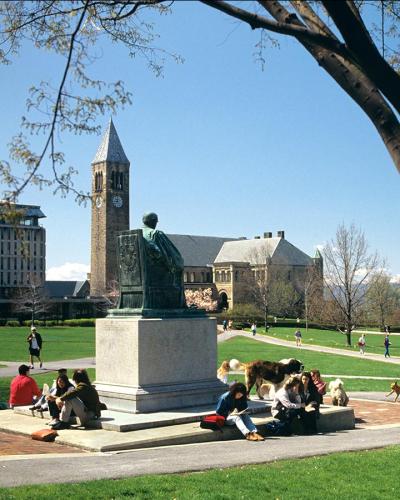Israeli Masculinity
(JWST/NES 2167) MW 1-2:15, 4 credits
Representations of masculinity play important roles in modern Hebrew texts. Through introduction to scholarship on gender and sexuality, students learn to critically analyze Hebrew texts featuring such representations and to synthesize how diverse textual representations of masculinity reflect and seek to influence the changing ways that Jewish and Israeli identities are conceived and performed. The course's tripartite structure aids student perception of masculine representations' diachronic development. In the first section, students analyze traditional depictions of Jewish masculinity and observe how Zionism's emergence brought about Jewish masculinity's reconceptualization; in the second section, students dissect diverse texts depicting and participating in efforts to redefine Jewish masculinity in Palestine; in the third section, students probe texts written and produced after 1948 that challenge the form of masculine identity dominant at the Israeli state's inception and push for greater diversity in how masculinity and femininity, heterosexuality and homosexuality, are conceived and performed.
Jewish Films and Filmmakers: Hollywood and Beyond
(JWST/NES/AMST/VISST 2790, PMA 2490) TR 1-2:15, 4 credits
What does it mean to call a film is "Jewish"? Does it have to represent Jewish life? Does it have to feature characters identifiable as Jews? If artists who identify as Jews—actors, directors, screenwriters, composers—play significant roles in a film's production does that make it Jewish? Our primary point of entry into these questions will be Hollywood, from the industry's early silent films, through the period generally considered classical, down to the present day. We will also study films produced overseas, in countries that may include Israel, Egypt, France, Italy, and Germany. Our discussions will be enriched by contextual material drawn from film studies, cultural studies, Jewish studies, American studies, and other related fields. Students will be expected to view a significant number of films outside of class—an average of one per week—and engage with them through writing and in-class discussion. The directors, screenwriters, composers, and actors whose work we will study may include: Charlie Chaplin, Irving Berlin, Al Jolson, Fanny Brice, Billy Wilder, Barbra Streisand, Woody Allen, Mel Brooks, Aviva Kempner, Joan Micklin Silver, the Marx Brothers, and the Coen Brothers.
The Law in Jewish History
(JWST/HIST/RELST 2853) MW 2:45-4:00, 4 credits
Before Jewish politics, Jewish identity and Jewish philosophy, there was Jewish law. No other institution is more important to the history of Judaism and to the Jewish way of life. In this lecture course, we will explore the ways in which legal thought and legal discourse shaped Jewish experience and expression between the biblical age and the computer age. We will discover how the cultural meaning of law changed over time, how legal concepts shaped Jewish belief and Jewish behavior, and how the study of Jewish legal sources contributed to the emergence of modern constitutional thought in the Atlantic world.
Modern Sephardi and Mizrahi Identities
(JWST/NES 3717, 6777; COML 3744) MW 9:40-10:55, 4 credits
This class examines modern articulations of identity by and about two distinct Jewish diasporas: Sephardic and Mizrahi Jews. Sephardic Jews trace their origins to the Iberian Peninsula prior to the end of the 15th century. Mizrahim are Jews who lived in the Middle East and North Africa until the mid-20th century, and their descendants. We will explore Sephardic and Mizrahi identities in works of fiction, memoirs, essays, poetry and films produced from the mid-twentieth century to the present. We will trace routes of migration across generations, paying particular attention to how texts construct identity in relation to language and place. Works will be drawn from wide geographic distribution including the Middle East, North Africa, Europe, and the Americas, and produced in Arabic, English, French, Hebrew, Ladino, and Spanish.
Jews, Christians, and Others in Late Antiquity
(JWST/NES/RELST 3888, 6888) TR 2:45-4:00, 4 credits
This course explores the interactions between Jews, Christians, and other religious groups in late antiquity, especially in Sasanian Persia circa the first through seventh century C.E. Students pay particular attention to the portrayals of Christians in Jewish rabbinic literature, including Midrash and Talmud, but also draw from early Christian, Zoroastrian, Manichaean, and other sources. There will be an emphasis on the reading of primary texts in translation in their appropriate historical contexts, and in comparison with one another. Students engage such questions as: How did Jews define themselves in relation to Christians, and vice versa? In what ways did Jews and Christians part ways with one another, as scholars often maintain, and what were the factors at play in their separation? And, lastly, what role did other religious and political groups, such as Gnostics, Zoroastrians, Romans, Mandaeans, Manichaeans, and early Muslims play in these developments?
Dying for God: Judaism, Christianity & the Meaning of Martyrdom
(JWST/HIST/RELST 4742, 6742) W 7:30-9:25, 4 credits
Martyrdom is one of the most troubling legacies of monotheistic belief. The idea and the practice of martyrdom remain with us, despite the inroads of secularization into every other aspect of Judaism and Christianity. Thanks to the global reach of mass media, martyrs continually intrude upon our consciousness. The willingness to make the ultimate sacrifice inspires, enrages and terrifies us. Where did this controversial ideal originate and why has it gained such enormous cultural power? This course examines the beginnings of martyrdom in the ancient Mediterranean, the cradle of Christianity and rabbinic Judaism. Looking closely at the historical context - the intellectual, social and political developments — that gave rise to the iconic figure of the martyr in the world of late antiquity, we will explore how men and women came to embrace the opportunity of "dying for God," and why the cult of martyrdom became a public institution. Ancient people viewed the spectacle of martyrdom with an equal measure of admiration and alarm; looking closely at evidence of their ambivalence, we will gain some perspective on our own mixed feelings about this deeply disconcerting phenomenon.






